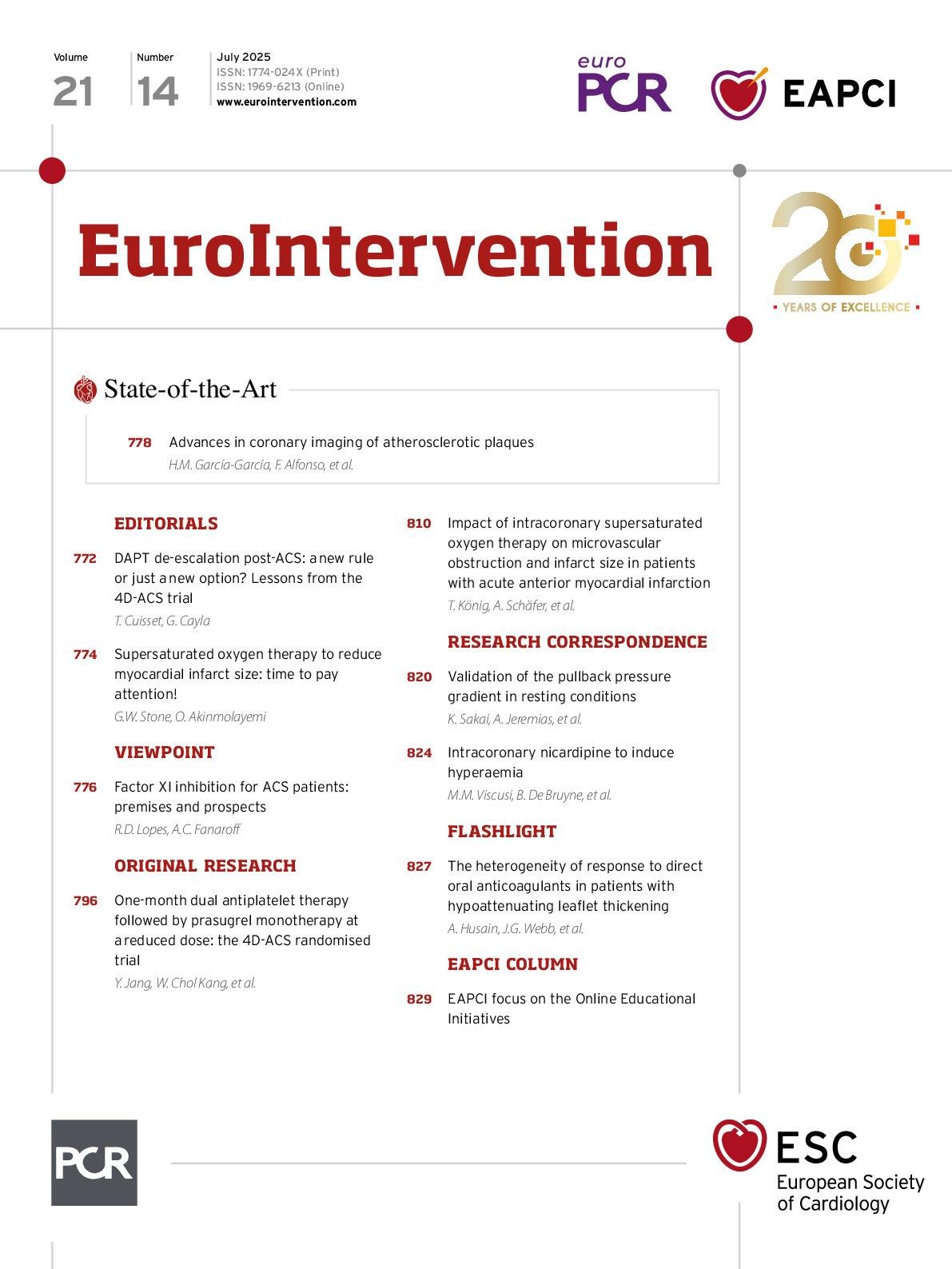Several pharmacological agents can induce transient maximal hyperaemia, but most suffer from shortcomings that limit their clinical usage. Nicardipine, a dihydropyridine calcium channel blocker, has been proposed as an alternative coronary hyperaemic agent1. In the present study, we compared intracoronary (IC) nicardipine with IC papaverine for the measurement of fractional flow reserve (FFR) and pullback pressure gradient (PPG)2.
From February 2022 to March 2023, we prospectively enrolled 107 patients presenting with stable coronary artery disease and having an indication for invasive functional assessment. FFR and PPG measurements were performed consecutively with a standard pressure/temperature wire (PressureWire X [Abbott]) connected to CoroFlow software, version 3.5 (Coroventis Research). Following the induction of maximal hyperaemia by papaverine (12 mg for the left coronary artery [LCA] or 8 mg for the right coronary artery [RCA]), FFR, PPG and the duration of the hyperaemic plateau were assessed. Upon return to the resting state, measurements were repeated using IC nicardipine (400 μg for the LCA or 300 μg for the RCA) (Figure 1A).
FFR was measured in 108 vessels. The FFR values obtained with...
Sign up for free!
Join us for free and access thousands of articles from EuroIntervention, as well as presentations, videos, cases from PCRonline.com

